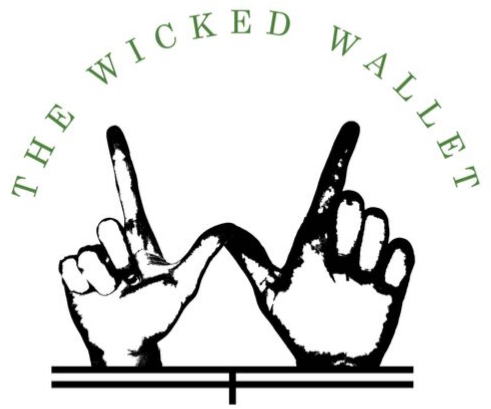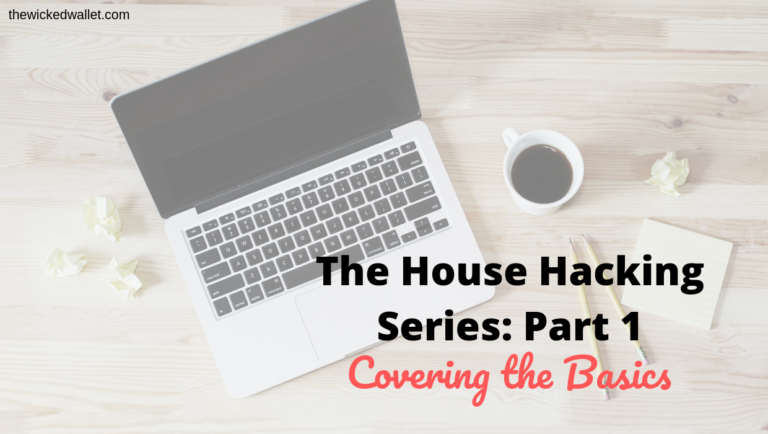After such a great response to How To Never Pay Rent Again, we have decided to start a House Hacking Series. In this series, we will discuss different types of house hacks, more loan options, finding and analyzing deals and so much more. If there is anything in particular you would like us to touch on, please let us know in the comment section!
With that said, let’s get started.
What is House Hacking?
In case you haven’t read How To Never Pay Rent Again, Jake discussed what house hacking is and outlined different loan options for a lower down payment. However, we wanted to elaborate on each a bit more.
House hacking is when you minimize or eliminate your housing expense by renting out rooms, units or space within your property. House hacking can be with a small multi-family property (small multi-families are classified as 2-4 units) or even in a single family home. There’s actually quite a few options for how you want to go about house hacking. Here are a few:
- Buy a duplex. Live in one side and rent out the other.
- Buy a multi-family property that has a storefront on the lower level and an apartment on the upper level. Live in the apartment and rent out the storefront to a business.
- Buy a single family home. Live in one room and rent out any spare rooms.
- Buy a single family home with an unfinished basement. You live in and finish the basement while renting out the rest of the home or vice versa.
- Buy a single family home and rent it out entirely. Live in an RV in the driveway.
- Buy a single family home and rent out your driveway/garage to someone who needs the space (whether to live or to park).
These are just a few ways to house hack, as you can imagine, the possibilities are really limitless – its just how creative you want to get. Not to mention, if you throw AirBNB into the mix, you can make this an even more lucrative endeavor (depending on your local laws governing short term vacation rentals). For example, we have heard of someone buying a single family home with two bedrooms and they have turned one of the bedrooms into an incredibly profitable AirBNB side hustle that completely covers their mortgage expense and then some.
Which brings me to the next major benefit of house hacking. With living expenses (think rent or mortgage) being the largest chunk in your monthly budget, why not try to minimize this using someone else’s money?
Yup. If you purchase a property that has higher monthly rent income to completely cover your mortgage expense, you can live for free! Not to mention, if you cash flow on the property while living there (there is leftover rent after the mortgage has been paid) then you could cover even more of your living expenses, like heat, electric and so on! However, you should be putting aside some money each month for regular maintenance and CAPEX, but we will cover that in this series.
But Isn’t A Down Payment Tons of Money?
We used to think so too, that is until we did some research on different kinds of mortgage loans. As mentioned in How To Never Pay Rent Again, there are three common types of loans used for house hacking, including FHA loans which only require 3.5% down and can be used for small multi-family homes (2-4 units) or single family homes, VA loans for qualifying members of the armed services that require no money down and there are also USDA loans which are for more rural areas but also require 0% down.
To touch on a couple other types of loans that are beneficial for house hacking strategies, we will look at 203k Rehab loans and Conforming Loans. Both of these loans are like the three mentioned above, you must be an owner occupant for a specified period of time (usually 1 year). There are special exceptions to this rule for each of the loans, for example a common one we have seen is if you receive a VA loan but then deployed, you obviously cannot be occupying and depending on your lender, you will be able to rent out your property.
203k Rehab Loans
These are a type of FHA loan so again, usually a downpayment of 3.5% is required. How these differ from normal FHA loans is that your lender will grant up to $30,000 more than the cost of the house so you can put that extra money towards renovations. Therefore, you can buy a fixer upper using this type of loan and usually fixer uppers have less competition than those that are already completely renovated. And since normal FHA loans can be stringent with property conditions for purchase, this can be a great back up plan.
With all loans, you need to do your own due diligence to see if it is the best option for you. With these specific loans, there is usually a longer closing period, much more paperwork and also you need to hire out the fixes to a licensed contractor – you can’t just do them yourself. Keeping all of that in mind, this might be a great option if you found a property in a great area that needs some work. Click here to learn more about this specific type of loan.
Conforming Loans
These are loans that follow the rules of Fannie Mae and Freddie Mac. They are two government-sponsored organizations that created rules for which mortgages must conform to in order for them to buy these mortgages. These normally have down payments between 5-10% but can have a down payment as low as 3% depending on credit history, loan-to-value ratio and many other factors of the borrower. For more on the loan limits with conforming loans, check out this site.
Bonus: If you want a fixer upper type of loan but cannot get approved for a 203k loan, try a Conforming Homestyle Renovation loan. Learn more about them here.
How to Save for the Down Payment
Even though these loan options provide a smaller down payment, it is still a down payment nonetheless and therefore an expense you must cover. Although saving up might be the most obvious option, its not the only option.
For example, if you have a Roth IRA, you can take out up to $10,000 of that for your first time home purchase without any early withdrawal penalties.
You can also receive a gift of $15,000 (limit for 2019) to help cover the cost of the down payment.
While both of these options might be great depending on your situation, Jake and I saved up our money for the down payment. We got really strict with our budget and we put a certain amount away each month that’s sole purpose was for the down payment. If this is the method you are going with, we would recommend following a couple steps to get started:
- Evaluate your savings and spending. Where can you cut expenses so you can put more money towards your down payment fund.
- Talk to a lender and ask them how much you can borrow. You don’t need to take out a loan for this full amount however it is good to know so you can set a target price for the property purchase. You can talk to lenders at your local bank or for recommendations from other homeowners.
- Calculate 10% of your target home price and make that your number to strive towards. Even if you only have to put down 3.5%, it is still helpful to have more in reserves for closing costs and other unknowns.
Note: It is always safe to have an emergency fund with at least 3 months worth of living expenses (bills, food, gas, etc.) in it prior to putting a lump sum towards this major purchase. The standard is usually to have between 3-6 months living expenses saved. You want to set yourself up for success and ensure that even if the worst happens, you will be OK. Jake and I each keep about a years worth of living expenses in accounts that are easy to liquidate so we have them accessible at all times.
Closing Thoughts
Like the phrase says, it takes money to make money… but at least you now know that you don’t need the full 20% down. By setting some strong savings foundation and using a lower down payment loan option, you’ll be on your way to house hacking in no time.
Let us know if you have a house hack or want to house hack in the comment section!
👇 Continue the House Hacking Series: 👇
- The House Hacking Series: Part 2 – How to Landlord
- The House Hacking Series: Part 3 – Finding & Analyzing Properties
- The House Hacking Series: Part 4 – The Round Up



